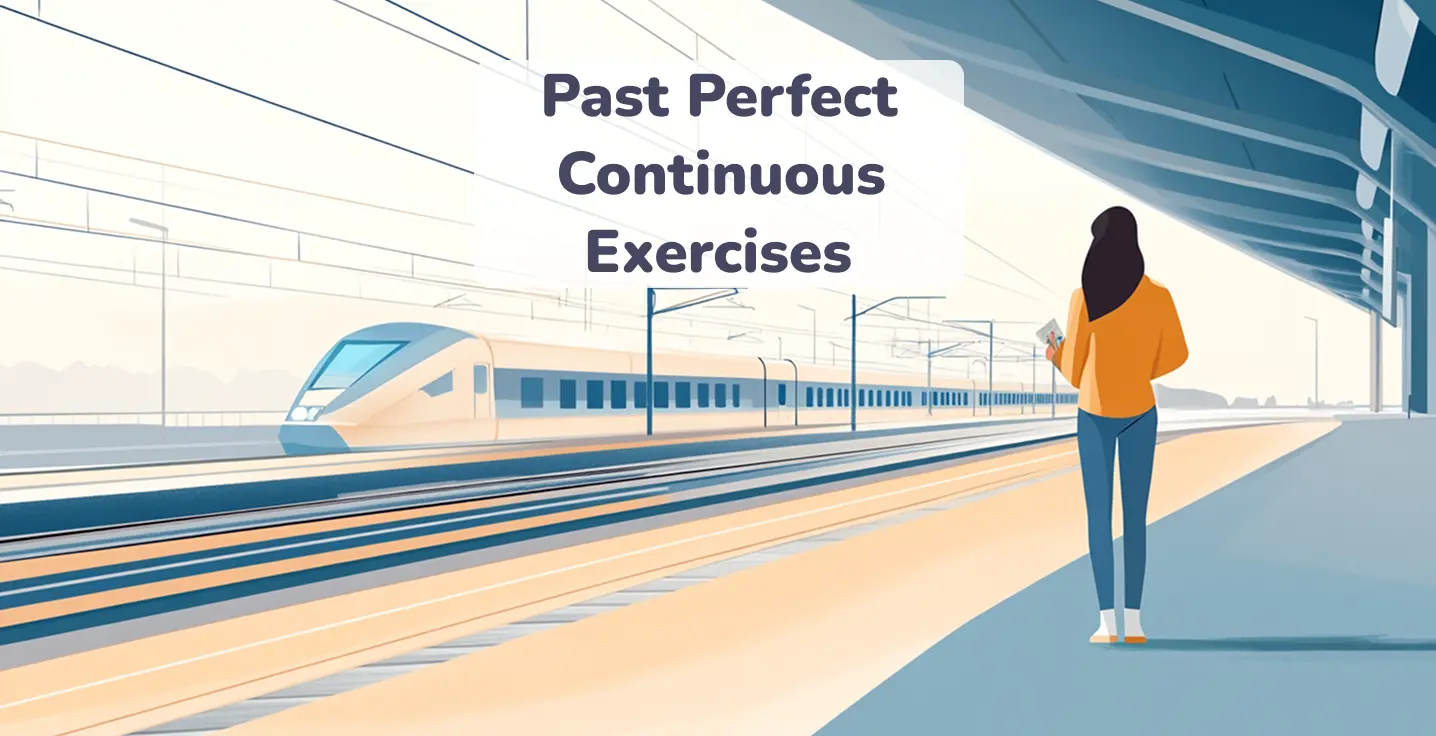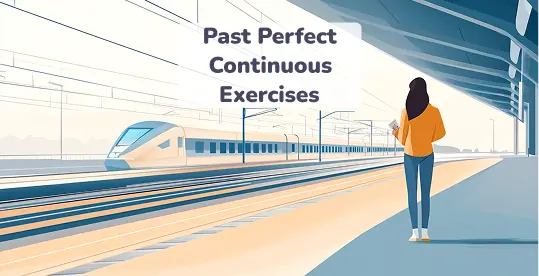Past Perfect Continuous exercises
What are the best Past Perfect Continuous tense exercises?
There are numerous kinds of workouts that take place in learning English, and for you, it is advisable to use some of them that fit your goals and expectations. Here, you will find the core types of Past Perfect Continuous tense exercises that are popular among students:
| Type | Implementation | Pros | Example |
|---|---|---|---|
|
Gap-fill |
It is a perfect way to learn grammar through written texts, reinforcing how the Past Perfect Continuous tense is used to describe an ongoing action that continued to some point in the past. |
|
He ______ Math for two years before he applied for this scholarship. had been studying |
|
Find a mistake |
Errors are common for the learning process, so this kind is used to make you more confident. |
|
Incorrect: I Correct: I |
|
Word order |
The Past Perfect Continuous tense has a tricky and unique structure that can be learnt with this type of exercise. |
|
had / working / she / been / class / quietly / in / before / the / left / I She
|
How to use Past Perfect Continuous practice to improve your grammar?
The core secret of becoming fluent in English is practice — everywhere you can, dedicating the amount of time that is suitable for you, whether it will be 5 minutes to recall words in memory or an hour of doing Past Perfect Continuous exercises with answers provided by Koto English.
Remain engaged, discipled, and reflect on new knowledge; that is how progress is made in learning English and other languages. Here are some tips for you to make the most out of our workouts:
- Do not guess the answer and focus on the task.
- Review your mistakes and define the reason you made them.
- Analyze sentence structure clearly.
- Focus on the concept and how it influences texts.
Using our sheets, you are able to practice grammar and reading based on real-world situations: telling about your experience, describing some background information, and being more fluent in speaking.
What to expect from a Past Perfect Continuous tense test?
First of all, you will demonstrate how you operate the sentence structure of Past Perfect Continuous, if you use it straightforwardly, and if you understand the context and concepts of the idea in every text.
Secondly, you can expect Past Perfect Continuous activities aimed at your ability to differentiate Past Perfect and Continuous tenses. It helps you to prevent confusion when talking with foreigners and communicate better in emails, chats, or just common conversations.
Depending on the level of your knowledge, you will be introduced to exercises of different levels, from A1 to C2, allowing you to make progress continuously. Moreover, you will learn new words, phrases, and idioms according to your capabilities.
How often should you take a Past Perfect Continuous quiz to track progress?
There is no one-size-fits-all answer as it depends on your goals and level of knowledge. However, we have noticed that practice is your best friend when studying English. Here is a comparison table that will help you define the practice terms:
| Goal | Frequency of tests |
|---|---|
|
General learning |
Every 2–3 months |
|
Preparation for international exams (IELTS, Cambridge, etc.) |
Every 2 weeks |
|
Intensive learning with short deadlines |
Every week |
|
Preparation for specific events (interview or otherwise) |
Every week or every few days (depending on the timeframe available) |
Therefore, you will be able to identify your strengths and weaknesses, and pay more attention to types of tests that require more time. Remember that all learners demonstrate different progress, so do not get demotivated and stick to your routine. You will do it!
What are the most effective Past Perfect Continuous activities for daily practice?
When you combine the learning of various aspects, you receive a comprehensive advantage of studying. Koto provides exercises for everyday activities, and you can accomplish them in minutes, practicing your English every day.
Here, you focus on reading and understanding the concepts, writing through interactive workouts that are aimed at improving sentence structure, vocabulary enhancement, as well as listening to the pronunciation of different words and sentences.
With Koto, you learn how to use the language daily, gaining new knowledge with fun and personalization.




